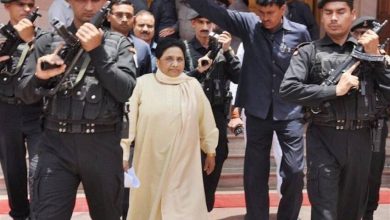The pandemic calls for transforming India socially and economically

In the globalised and competitive world, economy has become the benchmark for the growth and development of the country.
The economic parameters define the place and face value of a country at the international forums.
The social and human development Index is hardly considered as an important component to mark these parameters which too are an important filter to assess the health of our economy in broader perspective.
Economists and researchers should also consider Human Development Index (HDI) when calculating the growth of our economy and so on.
The pandemic calls for such initiative to be taken to transform India socially and economically.
Therefore it becomes essential to redesign our economic Institutions as welfare institutions and not only a means to measure profit and growth indicators.
After the pandemic the efforts should also be to make our HDI figure impressive along with economic measures.
It is true that India has managed to lift 27.1 crore people out of poverty from the year 2005-06 to 2015-16 but surprisingly it still accounts for 28 percent of the 1.3 billion poor in the world.
The pandemic gives us the opportunity to effectively implement Aspirational Districts Programme (ADP).
The ADP is believed to improve India’s rank in the Human Development Index and raising the living standards of people and at the same ensuring inclusive growth for all.
The talk and demand of direct transfer of money to unemployed, poor and marginalized or migrant workers these days to boost demand should be used to analyze through the prism of social transformation and achieving impressive Human Development Index.
It is true that our economy at this juncture is moving at a snail’s pace but what is even more worrisome that its performance has been the worst as compared to G-20 countries.
Pandemic can be one of the reasons but most of our economic indicators reveals the impact of faulty policies and ineffective implementation of the so called good policies.
According to D M Diwakar, Professor & Head Division of Economics & Agriculture Economics and former Director of A N Sinha Institute of Social Studies, Patna (Bihar), “ Indian economy has been facing the worst ever crisis due to unplanned lockdown since March 25 on account of Novel Corona Virus pandemic.
Centre for Monitoring Indian Economy estimated unprecedented loss of jobs of 120 million workers out of which 90 million were casual workers. About 21 million regular salaried workers lost their jobs.
Central Statistical Organisation estimates suggest that the growth rates of Gross Value Added (GVA) of all sectors were negative during April-June of 2020, except agriculture, which could attain 3.4% growth rate despite all odds.
“The GVA of Indian economy registered-22.8%lowest ever growth rate since independence.
Construction sector recorded the worst decline (-50.3%) followed by trade, hotel, transport and communication services (– 47%), manufacturing -39.3%, mining and quarrying -23.3%, public administration defence and other services -10%, electricity, gas, water supply -7% and financial, real estate and professional services by -5.3%, he added.
“Needless to mention, that the economy was growing at the rate of 8% in 2015-16. Unplanned demonetization took away the jobs of informal sectors.
Petty business was almost destroyed, which worked as a break on the growth of Indian economy and GVA could grow by declining rate of 7.1 per cent.
Unprepared implementation of goods and services tax was another blow, which brought the economy to further lower level at 6.5% in 2017-18.
No let up was seen in the next year and in 2019-20 also the GVA got further aggravated to the level of 4.8%, even before lockdown, which was the lowest in last six years, said Diwakar.
On the measures to put economy back in the track, he said, “A few supply side relief measures to industry, business, and workers have been initiated by the government but that remained almost ineffective in absence of sustained effective demand.
Unemployment and consumption have reached to lowest level in last four decades.
Therefore, unless purchasing powers of the people are raised either through direct income transfer or employment, it will be difficult to recover the economy back on the track.”
On the economic turmoil, Shrikant Modak, who has worked at senior editorial positions with the Economic Times, Business Today and Business India magazines and studied Economics at the London School of Economics said, “The reason for present economic turmoil across the world, of which India is also a part, has been the neoliberal economic policies pursued by the governments all over the world.
These policies bring growth but also raise income inequalities, by putting increasingly more income in hands of those who are already wealthy.
Their propensity to consume a proportion of every additional rupee of income is low. Hence much of it goes into savings.”
“These cumulative increased savings can be channelled into investments, which help GDP growth. This process however has limits.
This is struck when incomes of general public, (whose propensity to consume from every additional rupee of income is high in comparison to those who are wealthy), stagnates.
This creates mismatch between aggregate demand and aggregate supply of goods and services consumed and produced in the economy annually, and leads to build up of inventory, and therefore fall in aggregate annual production in each successive period,” he added.
“While this is the technical reason, the economic growth can still be sustained with appropriate economic policies to redistribute a higher proportion of additional annual aggregate income in favour of consuming general public through fiscal policies like taxation, welfare schemes etc.
Now, in India, the previous UPA government was trying to balance out this process to keep the growth momentum going.
But since the present government came it has done everything to derail the economy, beginning with demonitisation,” said Shrikant while comparing the policy of UPA and NDA.
On the approach of the present government, Shrikant said, “Since most of the low income consumers predominantly receive and spend their income in cash, this dramatically knocked down demand.
Then it pursued policies of enriching rich, like Ambanis and Adanis, and letting scoundrels like Nirav Modi and Mallaya run away with the Banks’ money.
Worse part is it is doing everything to enrich its cronies, at the expense of other business houses.
All this has created complex problems. Further, it has got rid of its all good professional advisors and replaced them with yes men, who will pander to the ego of one man.
This has led to gross mismanagement of the economy.
So long as this approach of the present ruling dispensation continues, there will be no solution.
Of course, Covid related lockdown also had dramatic impact, but the process of decline has already begun much before Covid surfaced.
“The lockdowns across the 215 affected countries including India have more impacts on GDPs than on Covid cases, fatalities and Covid recoveries.
We should have had partial lockdown with commensurate use of fiscal and monetary measures to increase demand and adopt supply side measures like provision of wage subsidy to sustain employment.
Rural and urban employment guarantee schemes should be strengthened.
World evidence has shown that corona is more prevalent among urban population, said Professor Somesh K Mathur, an associate professor of economics at the Indian Institute of Technology, Kanpur.
“To sustatain lives and livelihoods supply capacities should shift to rural areas where in rural and agricultural MSMEs should play transformation role of agriculture being transformed into industry by focusing on providing alternative energy needs by using biotechnology.
Agglomeration and clustering in agriculture can sustain growth. Further inland connectivity, high tech construction, promoting trade and outward investments in ports, roads and telecommunications and harbouring value chains are key to success.
ICT and 4IR technologies can be facilitators to growth process.
We need to shift comparative advantage in our favor by adopting the above policies and become atmanirbhar in true sense of the word,” he said.





